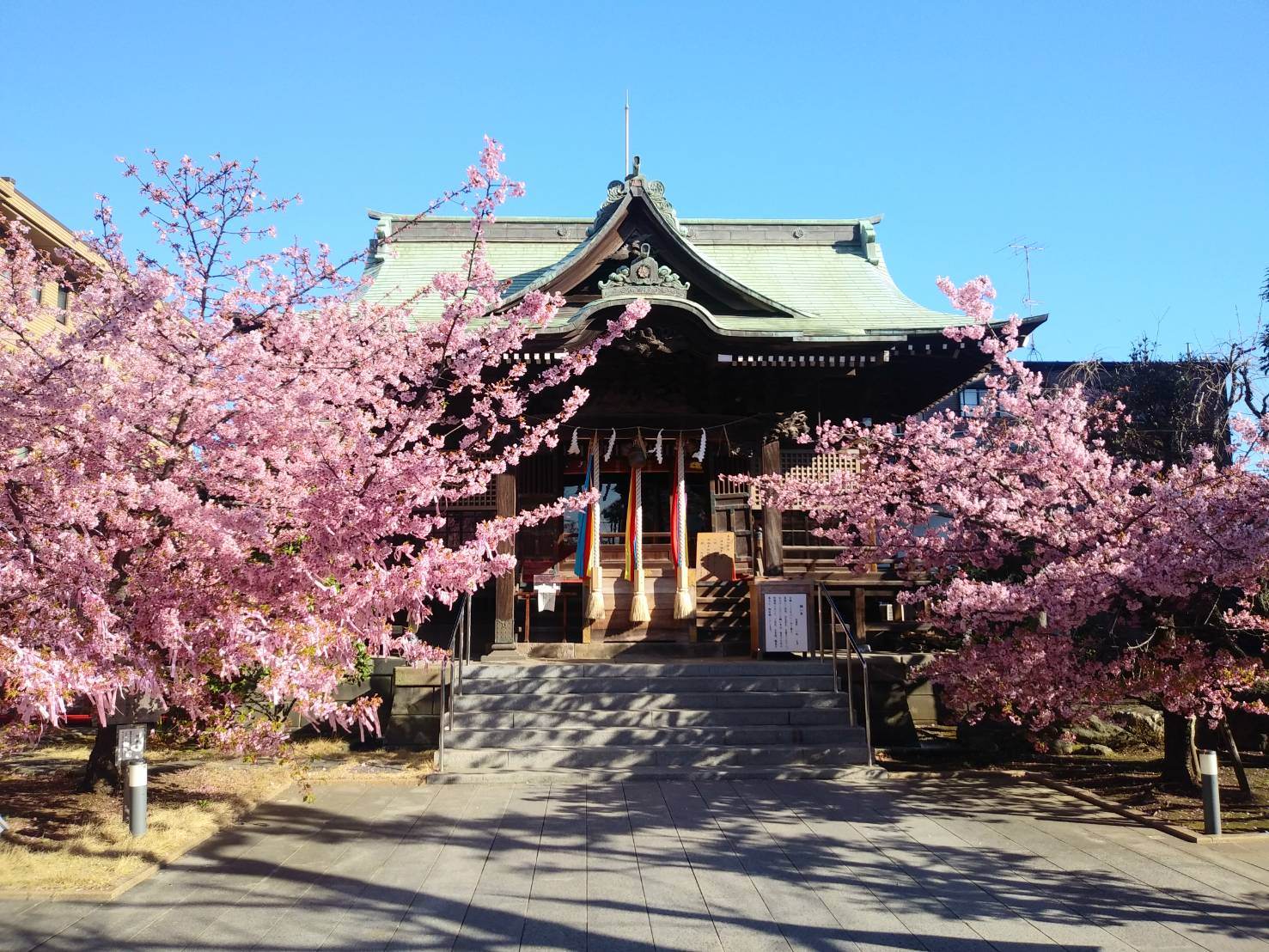每年在2月下旬至3月初左右的時候我都會來櫻神宮,看看河津櫻的盛開,然後在樹上綁上粉紅色的祈願緞帶哦~滿推薦大家來這哦~

Verified [Verified] denotes information that has been published with confirmation of its owing parties.
Sakura Jingu
The best power spot in Tokyo that inherits the ancient Shinto religion.
Koshiki Shinto is a belief system that emerged spontaneously in Japan from ancient times—founded in 1882 in Kanda, Tokyo, to revive the ancient Shinto tradition that has been passed down from generation to generation since ancient times. Unlike the "Nirei-Nihakushu-Ichirei" used by most Shinto shrines, the official way of worship is "Nirei-Shihakushu-Ichirei" (two bows, four-beat, one bow).
When the shrine was first built, it was believed to be beneficial for "curing illness," and "Hibuse" (fire prevention), and many worshippers visited the shrine. Afterward, in 1915, they received an oracle from God telling them to "move immediately to the west. The shrine was relocated to its current location between 1919 and 1922. After the relocation, the shrine was spared from the Great Kanto Earthquake and the fires of World War II and thus became known for its blessings to "ward off calamities. The shrine is also said to be blessed for any wish, as it enshrines several deities from Japanese mythology.
For those who are physically unable to visit the shrine in person, such as those who live far away from the shrine, try using the "Internet Yohai" (to worship the gods and Buddha from a distance), which is available on the official website of Sakura Jingu Shrine.
Highlights
-
The shrine is a rare example of a Shinto shrine in Japan that has inherited ancient Shinto rituals.
-
The method of worship at the shrine is "Nirei-Shihaku-Ichirei" (two bows, four-beat, one bow).
-
The shrine is known for its blessings for "curing illnesses," "Hibuse" and warding off calamities.
Photos
-
![Shrine was founded in 1882 (Meiji 15), inheriting the ancient Shinto religion.]()
Shrine was founded in 1882 (Meiji 15), inheriting the ancient Shinto religion.
-
![In spring, cherry blossoms adorn the grounds, creating a gorgeous mood.]()
In spring, cherry blossoms adorn the grounds, creating a gorgeous mood.
-
![Kawazu cherry blossoms on the left side of the main shrine, where you can make a wish for marriage]()
Kawazu cherry blossoms on the left side of the main shrine, where you can make a wish for marriage
-
![Beautifully illuminated at night]()
Beautifully illuminated at night
Official FAQs
Frequently Asked Questions have been vetted and answered directly by each listing.
Q
Do you have pamphlets in other languages? (If so, please also inform us of the supported languages)
English and Chinese are available.
Q
Do you have temple’s red ink stamps?
Distributed monthly.
Q
Is parking available?
There is a Times parking lot (paid parking) on the right side facing the torii gate.
Q
Are coin lockers available?
Not available.
Reviews
-
秦晴
Details
- Name in Japanese
- 桜神宮
- Postal Code
- 154-0014
- Address
- 3-21-3 Shinmachi, Setagaya-ku, Tokyo
- Telephone
- 03-3429-0869
- Holiday
- Open every day
- Hours
- The conferment place is open from 9:00am-5:00pm
- Admission
- Free
- Directions
- About 2 minutes walk from the north exit of Sakurashinmachi Station on the Tokyu Denentoshi Line.
- Credit cards
- Credit cards are accepted for praying. No credit cards are accepted for Kamifuda, Omamori(amulets, and Goshuin(seal).
- Website
- Official Website (Japanese)




